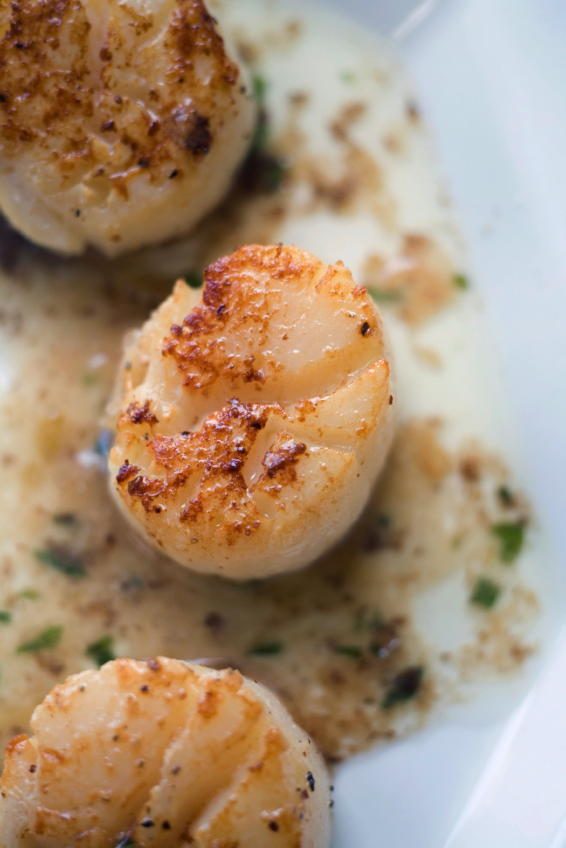



When he set out to open his own restaurant in 2011, Kevin Portcher wanted to cook New American, yet honor his roots. The first member of his family not born in Germany, he had grown up in Emerson and graduated from the CIA. When he saw the venerable Tudor building at the corner of Prospect and Hudson streets in Ridgewood, he immediately fell for its Old World charm.
Opening the heavy wooden door at the corner of the building under a large wrought-iron clock, you enter Village Green’s main dining room, atmospheric with leaded-glass windows and champagne-colored walls. It has about 30 seats. An oversized gilt mirror enhances a smaller back room. There is also sidewalk seating.
On weekends, guests are greeted by Portcher’s wife, Brandi, 29, his right hand in all aspects of the business. “I couldn’t do it without her,” says the chef, 31. “There are not enough hours in the day.”
You don’t duck into Village Green for a quick bite. On both our visits, we arrived ravenous and waited nearly 20 minutes before water was poured; about 10 minutes later, a basket of cold bread and colder butter was deposited on the table. Fortunately, both times the amuse (one a crisp gaufrette potato topped with smoked salmon) tided us over as we perused the menu, which changes every three months.
Portcher’s artfully composed and delicious dishes made up for the slow start, and the pace picked up once we ordered, though the meal remained leisurely. The menu is relatively small—nine appetizers and nine entrées. Our server encouraged us to try the smoked diver sea scallops over plum-tomato risotto topped with spring-pea foam. We were glad we did. The risotto got extra creaminess from a last-minute dollop of whipped mascarpone. The scallops were pan seared, then rested for a couple minutes under a glass cloche filled with cold applewood smoke, which seeped into the meat, imparting a lovely flavor.
When I saw walnut-crusted baked brie on the menu, I thought I had fallen into a time warp. Yet served with a poached-pear-and-raisin chutney, it turned out to be my favorite appetizer, elegant and supremely soothing.
In the signature Village Green salad, thick slices of powerfully smoky Westphalian ham formed an overbearing, wrong-headed foundation for the delicate spring mix topped with shaved Parmigiano-Reggiano in a Cabernet vinaigrette. Another dish that (more happily) never leaves the menu is salmon fillet over creamy couscous risotto with rich and buttery Pommery beurre blanc sauce. The fish is baked at a low 250 degrees and not flipped, crisping the skin while leaving the flesh luscious. A bone-in Berkshire pork chop came to the table already sliced (which didn’t in this case dry or overly cool it). Enrobed in a Calvados demi-glace and served with a delicious mash of baked apples, it was as comforting as the warm brie. A classic veal Oscar served with lump crab, tender asparagus and velvety Hollandaise topped the price list at $38, but the superb succulence of this Portcher signature alleviated the pinch.
Desserts are limited to five. The most unusual—and rewarding—was a whole black mission fig coated with raw sugar and caramelized with a torch for a crackly brûlée surface. It came with house-made vanilla ice cream and a whole strip of candied bacon. “It’s like a bacon lollipop,” said Portcher in a phone interview after my visits. Passion fruit panna cotta topped with candied violets provided a lighter, more refreshing finale.
Until recently, Village Green had hard wooden chairs more conducive to an interrogation than an unhurried dining experience. Portcher told me they were his customers’ number one complaint. So he recently replaced them. The new chairs have upholstered bottoms. I’m not sure whether that represents Old World or New World values, but it’s a step in the right direction.
Restaurant Details
- Cuisine Type:American - Modern
- Price Range:Moderate



